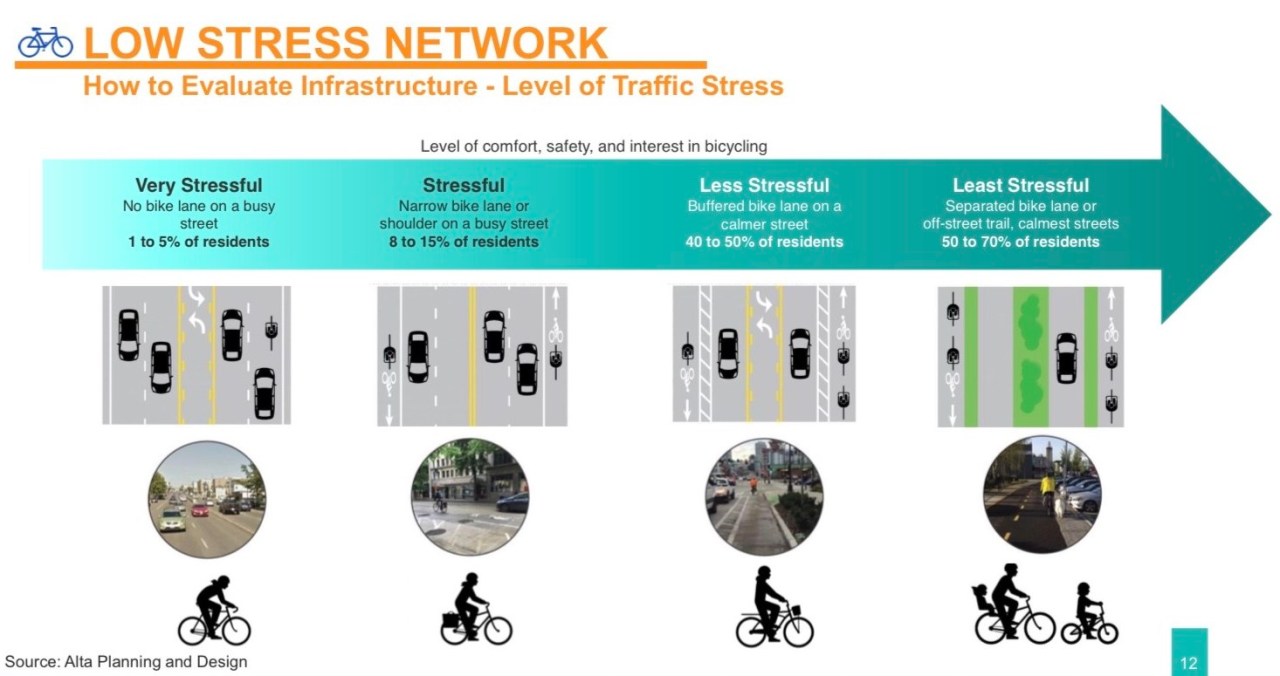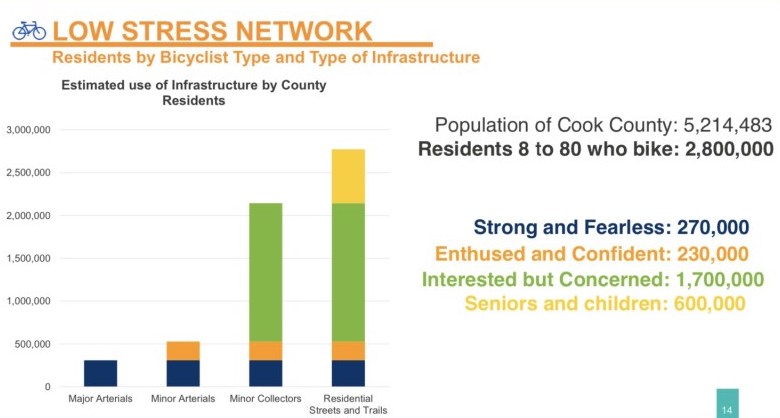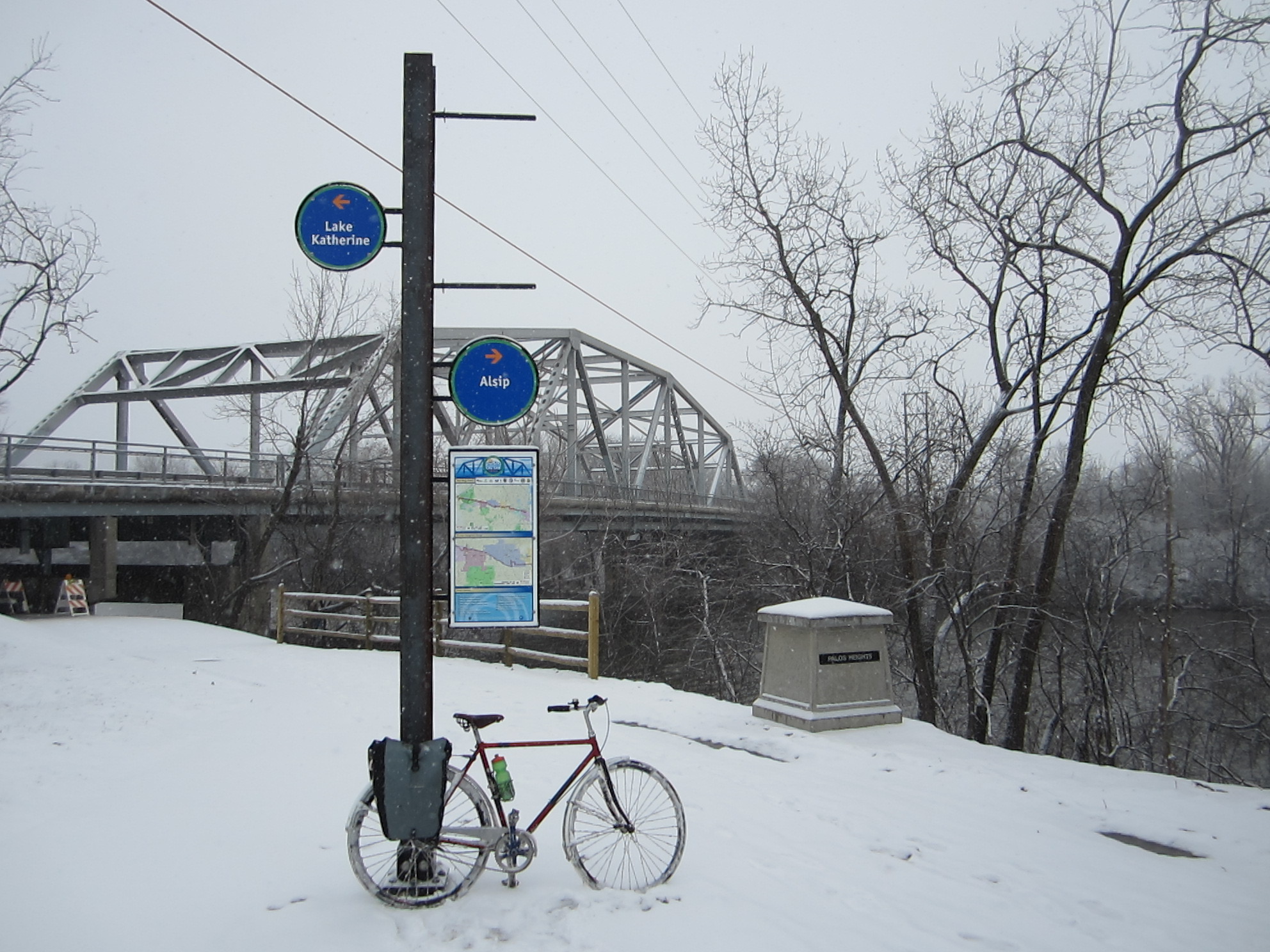Cook County is looking to create its first ever plan for bicycle infrastructure. At a virtual open house for the plan county officials said the Cook County Department of Transportation and Highways is one of the largest investors in bike infrastructure in the region. Connecting Cook County, the department’s first long range transportation plan in 70 years, released in 2016, which prioritized active transportation, has resulted more funds being allocated for biking infrastructure. According to CCDTH, the Cook County Bike Plan is the county’s effort to further refine its priorities, clearly define roles and responsibilities, and establish longterm goals for bike infrastructure.
The Cook County Bike Plan will focus on three principles:
- Expanding the existing system of off-street trails and other low-stress routes into a coherent countywide network.
- Ensuring investments serve a greater number of county residents and more equitably distributed.
- Enhancing facilities to support bike commuting and other purposeful bike trips.
The outreach team recently held two online open houses for the public to learn about the bike plan. Unfortunately these meetings were held at times that likely presented barriers to people who work traditional hours: 10 a.m. and 3 p.m. The Active Transportation Alliance brought this to the team’s attention and was told future meetings in June would be held at more accessible times.
One of the first topics mentioned during the open house I attended was challenges to bike planning. Barriers officials identified included the inherent lack of equity in the existing transportation network, and the manner in which bike projects are traditionally funded. More affluent communities can spend more money on creating and maintaining bike infrastructure, so the wealthier northern portion of the county has more biking infrastructure than the more blue-collar southern part. Other thing complicating the planning process include the uncertain future of scooters and micromobility; limited data on bike ridership; and unequal levels of advocacy among certain segments of the bike community.


Expanding access to trails is an important goal of the Cook County bike plan. Currently half of Cook County residents live within a mile and a half of a trail. Thirty eight percent live between a half mile to a mile and a half from a trail. And twenty percent of residents live within a half mile of trail.
Suburban residents have greater access to trails than city dwellers. There are fewer bike trails on the South and West side of Chicago and in adjacent south and western suburbs. Those working on the bike plan are aware that in some communities there are formidable obstacles to accessing a trail like railroad embankments and interstate highways, to name a few. In areas where off-street options are not available, the county will be developing an on-street neighborhood greenways strategy in order to extend the network.
Regarding principle two of the Cook County bike plan, ensuring equitable investments, currently less than 50 percent of Black residents and less than 45 percent of Latinx Cook County residents live within a mile and a half of a bike trail. In order to address inequitable access, planners will document trail access by race and ethnicity; support projects which would be most effective for improving access for communities of color and low-income communities; and target underrepresented groups in their outreach strategy. Along with wanting to reach more people of color, planners want to reach more women, given the relatively low numbers of women who bike.
The outreach strategy in order to get more participation from underrepresented groups will involve traditional meetings such as the virtual open houses along with interest group meetings. Interest group meetings will involve a deeper dive on topics of special interest to particular groups. There will also be ongoing digital and virtual engagement. There will be Q&A surveys, an interactive map where folks can report areas of interest, online community dialogue and an ideas wall, along with a Kids Corner on the project website. Plans for engagement include two other virtual open houses in June and three surveys throughout the process with completion of the bike plan slated for Spring 2022.
In order to promote transportation cycling, as opposed to just recreational riding, the county wants to support "first- and last-mile" to transit trips; establish a county-wide bike counting program to establish a baseline for how many people are biking and where; develop partnerships with municipalities and regional planning agencies to direct resources in an equitable manner; and work with businesses on creative incentives to encourage biking.
Ultimate goals for the bike plan are an increase in bike ridership, enhancing the low-stress network, filling in gaps in the existing network, and engage=ing underrepresented groups.
To be part of the process of shaping the Cook County bike plan, you can visit the public input website. There you can watch a replay of the previous open house and access surveys. The current survey asks how COVID has shaped your biking habits. As mentioned earlier, be on the lookout for another virtual open house in June.






